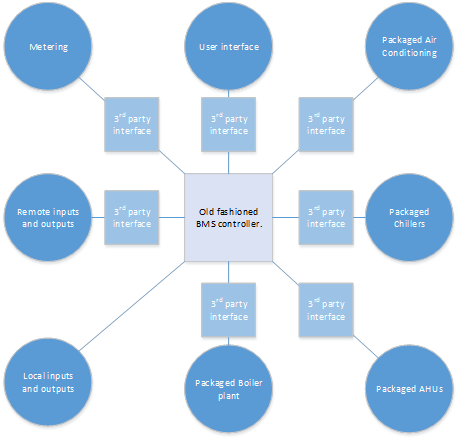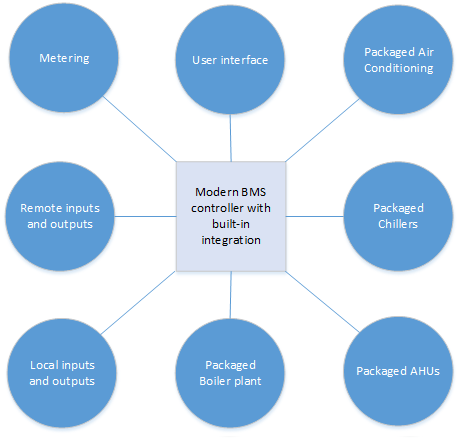Talk of integration as something new is the mark of someone way behind the times.
James Palmer
Sales and Business Development
North Building Technologies Ltd
|
June 2016 |
[an error occurred while processing this directive] |
| Integration is
not the future Talk of integration as something new is the mark of someone way behind the times. |
James Palmer Sales and Business Development North Building Technologies Ltd |
| Articles |
| Interviews |
| Releases |
| New Products |
| Reviews |
| [an error occurred while processing this directive] |
| Editorial |
| Events |
| Sponsors |
| Site Search |
| Newsletters |
| [an error occurred while processing this directive] |
| Archives |
| Past Issues |
| Home |
| Editors |
| eDucation |
| [an error occurred while processing this directive] |
| Training |
| Links |
| Software |
| Subscribe |
| [an error occurred while processing this directive] |
In
fact, integrating at machine to machine level is expected and an
everyday part of almost every project we now work on. Yet not all BMS
manufacturers see it that way.
We have all seen the rise of the Japanese air conditioning system. They
are ubiquitous, and interfacing to them is a standard part of almost
all major projects. Air Handling units, chillers and boilers all now
tend to come with packaged controls. Yet few building management
systems on the market have integration at their core.
The old fashioned BMS relies on physical inputs and outputs to connect
to the real world. For most, integrated communications are an
afterthought, often provided by a third party gateway; almost as if
this sort of thing is non-standard.
Reluctance to engage by many of the main players causes needless
complexity and expense on projects. Yet large parts of the market
accept this. Should they? I think we first need to understand why this
is the case.
Pointless Control
I’ve
been in the industry 23 years now, and for as long as I can remember
the cost of a BMS project could be quite easily guesstimated by the
number of “points” (sensors, relays, contactors, valves etc.) that
require monitoring and control. Add up all the inputs and outputs,
times them by about x and you have something approaching your project
value.
This model relies on all points being physical inputs and outputs. When
half the points you are controlling are attained by a few data
connections (as they often are now) the model starts to fall apart. One
data connection could gather a thousand values from a system, yet no
one would dare charge the standard multiplier for a single interface,
no matter how many "points" are collected.
Self-preservation society
The
result of all of these packaged controls entering the market has been a
slow whittling away of the physical point count on projects, which is
reflected in decreased BMS contract values. In a somewhat short-sighted
move, rather than adapting technology and looking for a new model, the
major manufacturers chose protectionism. And for a while it worked. By
ignoring integration, the whole discipline was given an air of
complexity and specialism it didn’t quite deserve. The negatives of
integration were expounded while the positives were swept under the
carpet, dissuading many re-sellers from ever attempting true
integration. Simply by making integration appear more complicated it
became more expensive and therefore less attractive.
However, as open standards proliferated, manufacturers had to respond.
The demand in the market was huge. Many simply paid lip-service with
proprietary versions of open standards which ticked enough boxes to
meet a spec but left a lot to be desired in terms of true openness.
Proprietary protocols are still the norm on many systems (Mitsubishi,
Daikin, Panasonic air conditioning for example), and the wide range of
standards (KNX,
LON, BACnet, Modbus, Dali, MBus)
means controllers need to support more than one protocol at a time to
be truly open. And even though the market demands it, very few
controllers available today could be classed as truly "open".
Disruptive Technologies
This situation left a gap for smaller companies to produce gateway products that sat in between the old fashioned BMS controllers and modern packaged systems.

The
old fashioned method is to buy a controller and put it in a panel, then
pull hundreds of cables back to that panel. You then buy another box
from a third party and use it to establish comms with your packaged
plant, then spend hours transferring values into your BMS controller
and then repeat for all other systems.
Independent firms grew large libraries of drivers and developed
hardware technologies to deploy them. As the market demanded more and
more integration, so the main players dug their heels in harder and
harder. The levee finally broke when the smaller integration companies
stepped up and started putting the ability to control as well as
integrate into their devices.
Here at North we developed our Object Verse cause and effect language
for our Commander controller and introduced our own range
of physical, distributed IO modules (Zip).
This gave the market what it had been asking for all along, a single
controller that could communicate with many disparate systems, while
monitoring and controlling what physical IO was left on the job.
Meet the new boss, better than the
old boss
The main players have been slow to respond. Smaller manufacturers may have taken a while to get
the message out, limited marketing budget can do that, but the message
is now out there and we are winning market share.

North’s
system allows engineers to create control strategies that treat package
controls and I/O in the same way. We provide a low cost distributed I/O
modules, which can reduce installation costs and our controller (Commander)
plugs directly into package AHUs, package chillers, meters and Air
conditioning systems. The engineer sees no difference between a value
from the AHU or from our I/O modules. All values are available to all
parts of the system all of the time.
The argument for a modern integrated control system is easy to make.
The market has now decided that this is what it wants. It’s an exciting
time at North, we are integrating systems now and have been for many
years. The future? Well, that is in development as I type...
To become a North partner contact me here, or email sales@northbt.com
About the Author
James
Palmer joined North straight out of University and has now been with
the firm for 23 years. Starting in technical support, James is now in
charge of sales and business development at the Brighton (UK) based
company.
North Building
Technologies Ltd make
control products for buildings. Our controllers link systems together
to optimise building performance, and our user interfaces simplify
building management. Our products are configured for domestic,
commercial and industrial buildings by trusted resellers, installers
and OEMs.
North are an independent company based in Brighton, UK since 1995.
[an error occurred while processing this directive]
[Click Banner To Learn More]
[Home Page] [The Automator] [About] [Subscribe ] [Contact Us]